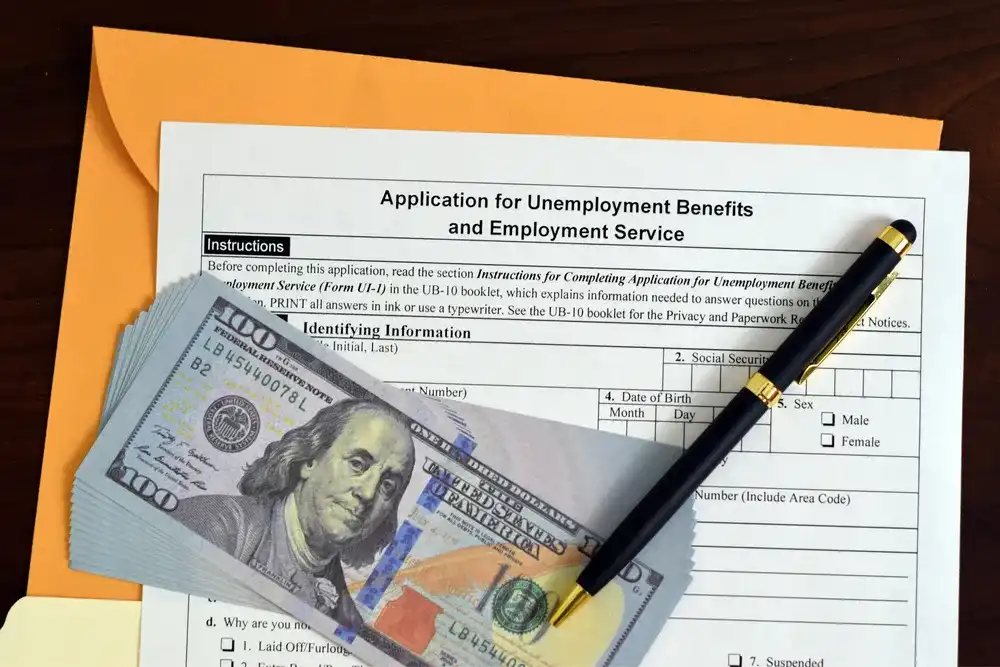The Great Resignation: Financial Tips for Career Transitions
The Great Resignation is not just a buzzword; it's a real shift in the job market, as the U.S. Bureau of Labor Statistics confirmed. From April 2021 to April 2022, a staggering 71.6 million individuals parted ways with their jobs, averaging nearly four million resignations each month. Interestingly, a study revealed that 80% of those who made the leap into unemployment experienced regret.
This surge in resignations stems from shifting economic landscapes, changing workplace flexibility norms, and a diminishing emphasis on workplace relationships. In the face of these challenges, this article aims to provide practical financial advice for those navigating career transitions during the Great Resignation, offering strategies to ensure financial stability during these uncertain times.
Understanding the Great Resignation
The Great Resignation signifies the notable surge in U.S. workers resigning from their jobs, commencing in the spring of 2021. This trend unfolded against the backdrop of robust labor demand and low unemployment, with the easing of COVID-19 pandemic severity due to increasing vaccinations. A crucial aspect of this phenomenon is the accelerated pace at which individuals reevaluate their careers and make bold decisions to switch paths.
A significant contributor to this widespread trend is the prevalent availability of alternative job opportunities. Employees are often leaving their current positions after securing more enticing offers elsewhere. Consequently, the apparent spike in resignations also reflects a decline in hiring for new positions. This dynamic shift underscores the importance of financial preparedness during such transitions.
Consider that the coronavirus pandemic of 2020 played a significant role in reshaping the employment landscape, impacting the payrolls of 45.3% of companies with employees. These effects manifested in various ways, with 39.2% reducing their employees' hours, benefits, or pay, 5.9% increasing them, and 0.2% experiencing a different impact on their payroll. Some individuals inevitably postponed planned exits during the initial economic turmoil, whether to explore entrepreneurial endeavors or for other reasons.
As COVID-19 vaccines became more widely available and the economy rebounded, hiring gained momentum. Simultaneously, those who had delayed resigning for various reasons felt increasingly confident about proceeding. This intricate interplay of economic factors underscores the fluid nature of the job market during the Great Resignation, highlighting the importance of financial adaptability for individuals navigating career transitions in these dynamic times.

Financial Planning for Job Changes
People embark on job changes for various reasons, whether enticed by higher pay and improved benefits, seeking better opportunities for personal and professional growth, or turning a side hustle into a full-time endeavor. Regardless of the motive, making such a decision shouldn't be taken lightly, and strategic financial planning becomes paramount. Even when accepting an offer for increased pay and improved benefits, it's crucial to approach the decision with a mindful financial perspective.
Breaking down the numbers, around 2.5% of turnover is attributed to voluntary resignations, while approximately 1% is tied to layoffs and firings. While these percentages might seem modest, they show the importance of financial preparedness. Changes in pay schedules, potential reductions in pay, and financial gaps when transitioning into a new business venture are all considerations that warrant a proactive approach to financial planning.
Navigating career transitions requires a well-crafted financial plan, and the following recommendations serve as a guide for a smoother journey:
Evaluate Your Budget
When navigating career transitions, start by scrutinizing your budget for potential adjustments in income or expenses, laying the groundwork for financial stability. Complement this with the 50/20/30 strategy—allocating 50% to necessities, 20% to savings/debt, and 30% to discretionary spending. This balanced approach ensures disciplined financial management.
Don't forget to build and set aside a fund for emergencies, providing a crucial safety net equivalent to three to six months of living expenses. Integrating these steps fortifies your financial foundation, ensuring resilience during transitions and fostering long-term fiscal success.
Bolster Your Emergency Fund
We can’t emphasize this one enough. Strengthening your emergency fund is crucial. This fund acts as a reliable financial safety net, providing a cushion during the uncertainties that may arise during a career transition. Aim to ensure your emergency fund is robust enough to cover unexpected expenses (remember the 50/20/30 strategy).
Assess Healthcare and Retirement Benefits
Evaluate your existing healthcare and retirement benefits. This assessment is essential to guarantee a seamless continuation or transition of these critical aspects. Consider the impact on your health coverage and retirement savings, making adjustments as necessary.
Moving forward in your financial planning:
Consider Broader Financial Implications
Reflect on the broader financial implications of the career shift. Are there potential tax implications? How might your retirement savings be affected? Addressing these questions ensures a more comprehensive and strategic financial plan.
Incorporate Tax and Retirement Planning
Integrate tax planning into your overall strategy. Consider the potential tax implications of the career change, and adjust your plan accordingly. Simultaneously, assess how the shift may impact your retirement savings, making informed decisions to align with your long-term financial goals.
Craft a Comprehensive Financial Plan
Your financial plan should be comprehensive, serving as a compass during the uncertainties of job changes. This plan fosters financial stability and confidence as you embark on a new professional chapter by addressing potential challenges and opportunities.

Managing Finances During Unemployment
Experiencing unemployment can be challenging, but strategic financial management can help navigate these uncertain times. Here's advice on handling financial challenges during unemployment, whether it's a temporary phase or part of a deliberate career shift.
Navigating Unemployment
- Manage Expenses: Assess your budget and identify areas where expenses can be trimmed. Prioritize essential spending, ensuring necessities are covered while minimizing discretionary spending.
- Explore Unemployment Benefits: Investigate available unemployment benefits. Understanding the eligibility criteria and application process ensures you can leverage these resources during the period of unemployment.
- Assess Short-Term Financial Priorities: Reevaluate short-term financial goals and priorities. This may involve adjusting repayment plans, pausing non-essential expenditures, and focusing on essentials like housing and healthcare.
Switching to Lower-Paying Jobs or Pursuing a Side Hustle
If transitioning to a lower-paying job or pursuing a full-time side hustle, recalibrate your budget accordingly. Prioritize essential spending, revisit your financial goals, and explore opportunities to supplement income.
- With an Adequate Emergency Fund: An emergency fund provides a safety net during these transitions. While still managing expenses, the financial cushion offers peace of mind and flexibility to explore new opportunities without immediate financial strain.
- Without an Adequate Emergency Fund: Without a robust emergency fund, meticulous budgeting becomes even more critical. Prioritize essential needs, explore assistance programs, and consider temporary measures to bridge financial gaps until stable income is reestablished.
Navigating financial challenges during unemployment requires a strategic approach. Whether adjusting to lower pay or pursuing entrepreneurial endeavors, financial resilience is key. With careful planning, utilizing available resources, and adapting to changing circumstances, individuals can successfully weather the storm of unemployment and emerge financially empowered.
Building Income Streams
Diversifying income streams is a savvy approach during career transitions, providing financial stability and flexibility. Strategies like freelancing, side gigs, and exploring new job opportunities offer avenues to supplement income. Interestingly, 39% of working Americans, totaling as many as 80 million, report a side hustle. This figure rises to 50% among millennials, showcasing a growing trend in non-traditional employment.
The statistics reinforce the significance of multiple income streams:
- An additional 35 million individuals, roughly 17% of the working-age population, plan to start a business.
- 70% of Gen Z actively seeks side hustles, reflecting a proactive approach to financial independence.
- 64% of Gen Z plans to "monetize a project on social media" in the next year, with 40% having started in the last year.
- Even among baby boomers (age 59-77), 24% indicate having a side hustle, challenging the notion that such pursuits are exclusive to younger generations.
In the broader job market context, U.S. employment is projected to increase by 6.5% from 150.5 million jobs in 2014 to 160.3 million jobs in 2024. The U.S. Bureau of Labor Statistics (BLS) Employment Projections program highlights the evolving nature of employment opportunities, emphasizing the importance of adaptability and a proactive stance in navigating career changes.
Diversifying income streams provides financial resilience and aligns with the dynamic shifts in the modern job market. As individuals explore freelancing, side gigs, or new job opportunities, they position themselves to thrive amidst changing economic landscapes, fostering a more secure and adaptable financial future.

Long-Term Financial Wellness
Achieving long-term financial wellness extends far beyond being employed; it encompasses strategic wealth-building, retirement planning, health expense preparation, and more. Transition periods provide an opportune moment to reevaluate and fortify your financial future. Consider the following insights for long-term financial planning post-transition:
Building Wealth
Embarking on the journey of building wealth is more than pursuing financial success; it's a commitment to securing a prosperous and resilient future. This section explores strategic approaches to rebuild savings, navigate investments amidst uncertainty, and foster financial stability for sustained wealth growth.
From practical daily savings strategies to informed investment decisions, let's delve into the essential steps that contribute to the foundation of enduring financial wellness.
Rebuilding Savings
Rebuilding savings post-transition is a pivotal step in ensuring long-term financial wellness. Adopting the "Save $5 Per Day" approach is an effective strategy to kickstart this process. This manageable daily savings plan may seem modest initially, but over time, it accumulates into a substantial fund, laying a robust foundation for future financial goals.
Investing Amidst Uncertainty
Navigating the complexities of investing during uncertain times requires a diversified approach and a long-term perspective. While market fluctuations are inevitable, maintaining a diversified portfolio can mitigate risks and enhance financial resilience, fostering sustainable wealth growth.
Maintaining Financial Stability
Prioritizing the repayment of credit cards is a key element in sustaining financial stability. Reducing outstanding balances minimizes interest payments and contributes to overall fiscal health. Building and preserving a strong credit score also remains essential, influencing favorable terms for future financial endeavors.
Growing Financial Literacy
Financial literacy is the cornerstone of informed decision-making and long-term financial success. The importance of expanding your financial knowledge through educational resources, books, online courses, podcasts, and insights from influential financial YouTubers cannot be overstated. Elevate your understanding of personal finance, empower your financial decisions, and embark on a continuous learning journey for a more secure and knowledgeable financial future.
Educational Resources
Enhancing financial literacy is a continuous process that significantly impacts long-term financial wellness. Engage with educational resources, such as books and online courses, to deepen your understanding of effective money management strategies.
Following Financial Influencers
Stay informed by following financial YouTubers who offer valuable insights and practical tips on managing finances. Their expertise can provide guidance on various financial scenarios, empowering individuals to make informed decisions and navigate the complexities of personal finance.
Temporary Financial Assistance
When temporary financial assistance is needed to bridge gaps during transitions, exploring options like installment loans from Cash Store can provide a buffer. While it's advisable to prioritize financial stability, installment loans, cash loans, and title loans can be a strategic tool to manage immediate needs, allowing individuals to navigate challenges without missing crucial payments.

Navigating Transitions with Financial Resilience
Whether embracing the shifts of the Great Resignation, managing unemployment challenges, or building income streams, strategic financial planning is the linchpin for stability. Rebuilding savings, exploring diverse income avenues, and growing financial literacy collectively shape long-term financial wellness.
In the face of uncertainty, such as job changes or pursuing a side hustle, resilience lies in embracing change with fiscal preparedness. By fostering financial adaptability, individuals empower themselves to navigate transitions successfully, ensuring survival and thriving in the ever-evolving landscape of professional journeys.
The content on this page provides general consumer information or tips. It is not financial advice or guidance. Each person’s circumstances are unique. The Cash Store may update this information periodically. This information may also include links or references to third-party resources or content. We do not endorse the third-party or guarantee the accuracy of this third-party information. There may be other resources that also serve your needs.
More Articles
What to Know About Crypto-Backed Loans
Curious about using your crypto as collateral? Discover how crypto-backed loans work, their benefits, risks, and what to consider before borrowing.
Read More >How Does Installment Loan Approval Work?
Curious about how installment loan approval works? Learn about the key factors lenders consider, the application process, and tips to improve your chances of approval.
Read More >Is it Better to Get an Installment Loan or Line of Credit?
Installment loan or line of credit—which is right for you? Learn the key differences, pros and cons, and how to choose the best option for your financial needs.
Read More >Loan Amount is subject to loan approval. Loan terms and availability may vary by location. Approval rate based on complete applications received across all Cash Store locations. Customers can typically expect to receive loan proceeds in less than 20 minutes; however, processing times may vary. Loans / Advances are provided based on approved credit. Each applicant for credit is evaluated for creditworthiness.
Please see the Licenses and Rates page for additional product details.
Cash Store offers consumer credit products that are generally short-term in nature and not intended for long-term borrowing needs.
In Texas, Cash Store is a Credit Services Organization. Loans are provided by a non-affiliated third-party lender. Please see the Licenses and Rates page for links to Consumer Disclosures and choose the one for the product and amount that most closely relates to your loan request.
Customer Portal residency restrictions apply. Availability of funds may vary by financial institution.

